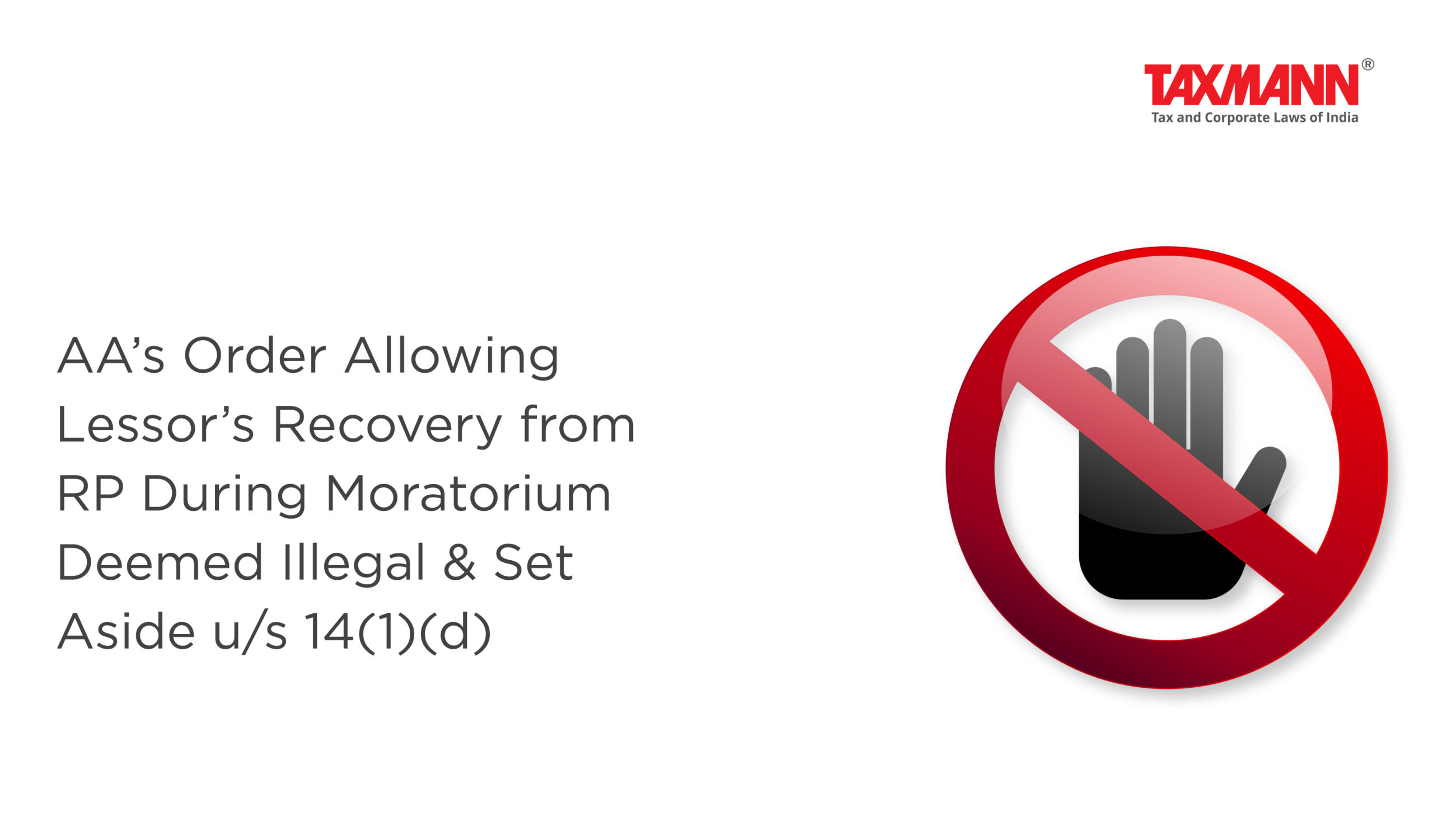AA’s Order Allowing Lessor’s Recovery from RP During Moratorium Deemed Illegal & Set Aside u/s 14(1)(d)
- News|Blog|Insolvency and Bankruptcy Code|
- 2 Min Read
- By Taxmann
- |
- Last Updated on 5 June, 2023

Case Details: Sunil Kumar Agrawal v. New Okhla Industrial Development Authority - [2023] 150 taxmann.com 351 (NCLAT-New Delhi)
Judiciary and Counsel Details
-
- Rakesh Kumar Jain, Judicial Member & Naresh Salecha, Technical Member
- Rakesh Kumar, Ankit Sharma, Dhruv Gupta & Lav Dhawan, Advs. for the Appellant.
- Rachit Mittal, Parish Mishra, Adarsh Srivastava, Pooja Kapur & Kumar Mihir, Advs. for the Respondent.
- Rachit Mittal & Ritika Dawalia, Advs. for the Applicant.
- Sunil Kumar Agarwal, Rakesh Kumar, Preeti Kashyap & Ankit Sharma, Advs for the Respondent.
Facts of the Case
In the instant case, the Respondent Development Authority (Lessor) entered into a lease deed with the corporate debtor for the purpose of constructing residential flats. The said lease deed was executed for a period of 90 years and the premium was to be paid by the corporate debtor from 2014 to 2021.
Meanwhile, an application u/s 7 of the IBC was admitted against the corporate debtor and RP (i.e. appellant) was appointed. The Respondent put up its claim to the RP and requested RP to make payment of dues within 15 days.
Since the same was not paid by the RP, presuming that the RP had declined payment of dues, an application was filed before the Adjudicating Authority (NCLT) and the same was allowed vide the impugned order.
Aggrieved by the said order, the appellant filed an instant appeal before the National Company Law Appellate Tribunal (NCLAT).
NCLAT Held
The NCLAT observed that Section 14 of the IBC deals with the moratorium and section 14(1)(d) of the IBC states that there would be a prohibition from the recovery of any property by an owner or lessor where such property is occupied by or in the possession of the corporate debtor.
The NCLAT held that, in terms of the explanation appended to section 14(1)(d), the right has to be read in respect of licences, permits, registrations, quotas, concessions, and clearances but it should not be read as including lease premium amount or lease rent, which had been ordered by the Adjudicating Authority. Therefore, the impugned order was patently illegal and deserved to be set aside.
List of Cases Reviewed
-
- New Okhla Industrial Development Authority v. Sunil Kumar Aggarwal (RP) [2023] 150 taxmann.com 350 (NCLT – New Delhi) (para 11) reversed [See Annex]
Disclaimer: The content/information published on the website is only for general information of the user and shall not be construed as legal advice. While the Taxmann has exercised reasonable efforts to ensure the veracity of information/content published, Taxmann shall be under no liability in any manner whatsoever for incorrect information, if any.

Taxmann Publications has a dedicated in-house Research & Editorial Team. This team consists of a team of Chartered Accountants, Company Secretaries, and Lawyers. This team works under the guidance and supervision of editor-in-chief Mr Rakesh Bhargava.
The Research and Editorial Team is responsible for developing reliable and accurate content for the readers. The team follows the six-sigma approach to achieve the benchmark of zero error in its publications and research platforms. The team ensures that the following publication guidelines are thoroughly followed while developing the content:
- The statutory material is obtained only from the authorized and reliable sources
- All the latest developments in the judicial and legislative fields are covered
- Prepare the analytical write-ups on current, controversial, and important issues to help the readers to understand the concept and its implications
- Every content published by Taxmann is complete, accurate and lucid
- All evidence-based statements are supported with proper reference to Section, Circular No., Notification No. or citations
- The golden rules of grammar, style and consistency are thoroughly followed
- Font and size that’s easy to read and remain consistent across all imprint and digital publications are applied





